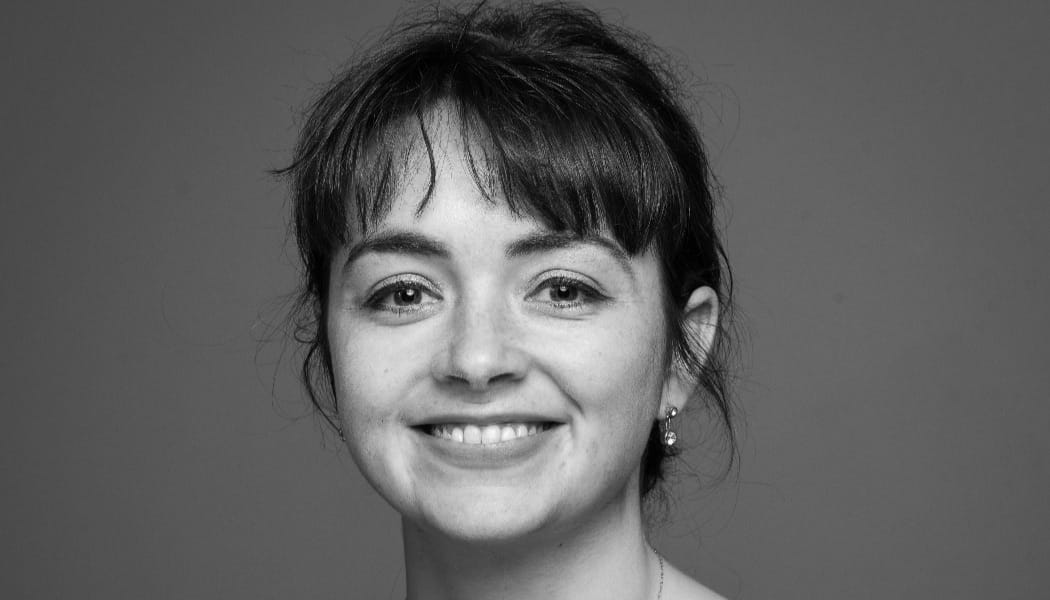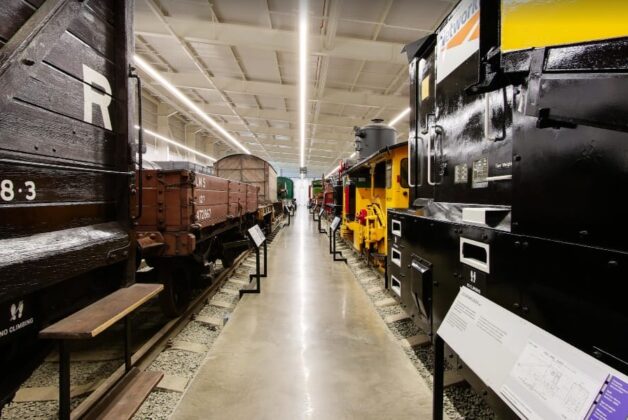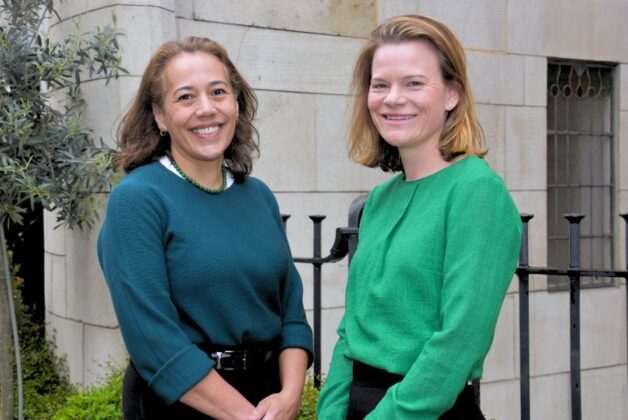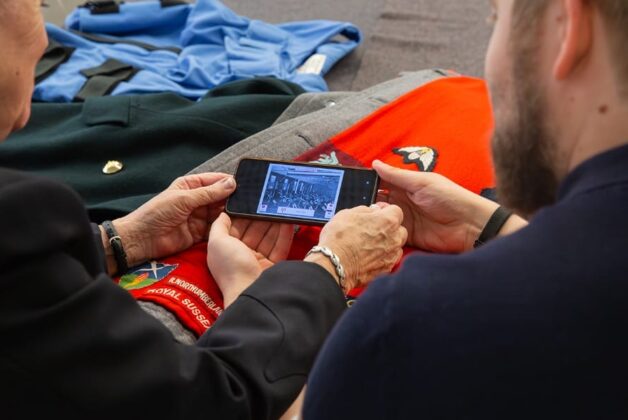Alistair Hardaker
Image: Georgina Brooke (Photo: John Cairns)
Georgina Brooke, Senior Content Strategist at One Further and Chair of Museums Computer Group, has written what she calls “the book I would have wanted when I started out.” ‘Digital Content in Museums: Delivering Discoverable, Usable and Strategic Content in Museums, Galleries and Heritage Institutions ‘
Advisor spoke with the author as the new book is published.
What inspired you to write the book, was there a particular gap you saw in existing resources?
I was inspired to write this book as it’s what I would have wanted to have when I started out. It presents three key aspects of digital content capability in the sector; i) how to make yourself move visible online (on your own and third party platforms), ii) how to give users what they want once they have found your content, and finally iii) content strategy – how to use digital content to affect wider goals like audience development, and the creation of new digital products and services for a non-local audience.
It also came from the experience that it’s very difficult to effect meaningful digital change if that change is not supported from the very highest levels of senior leadership in the organisation. Lack of knowledge and investment from the top level can stymie attempts at significant digital transformation.
At present, digital is too often treated as a support function—used to promote physical events or enhance in-gallery experiences—rather than being seen as a creative, strategic tool in its own right. I want this book to be read by senior leaders too, and help reposition digital as central to how we build and connect with audiences, particularly those who are currently underserved or disengaged.
Relying solely on traditional programming, often planned years in advance, will not be enough. Audiences are shifting, both demographically and in terms of how they engage with content. If the sector doesn’t adapt, it risks losing connection with the very communities it aims to serve.
What’s the biggest misconception holding the sector back from digital success, and what should they be doing instead?
I think lack of awareness of the difference between organic and paid social media content is a real issue in the sector.
Organic content is content you’ve not paid for and has no form of targeting behind it. Whereas paid social content allows you to target your content to a specific audience.
Everyone I’ve spoken to who’s worked in a digital role in the sector can remember a time when a colleague has asked them to create a social media post about an event happening locally for a special audience group. If you manage a Facebook or Instagram account for an institution, you’ll know that this kind of content very rarely does well organically – in most cases only a small percentage of your following are local, and an even smaller percentage are local and that target audience group.
The issue with running lots of these posts organically is the social media algorithm recognises you’re getting very little engagement from your posts and shows your content to less and less people.
These platforms are interested in keeping people on their platform for as long as possible. If you create stories that resound with a broad – not necessarily local – audience, your organic content will do well. But posts that are only relevant to a specific segment should only go out with paid budget to target them to the right place, or you risk penalising your overall health on the channel.
Social media will promote good organic storytelling, it won’t effectively promote your specialist event to specific target audiences for free.
What are the most common SEO mistakes you see heritage institutions making, and what quick wins can they implement?
One of the biggest disruptors in search at the moment is AI overviews. We’ve seen large drops in traffic from search to cultural sector websites since AI overviews began to surface for this sector.
What that means is you’re less likely to get top-of-funnel new users to your website for articles from search, as a lot of less specialist users will be satisfied by the AI generated response to their query.
But, on the positive side, it means the traffic that does come through to your site is probably more dedicated.
If someone has bothered to find your article from search and not just rely on the AI overviews, how can we cultivate that visit into something more meaningful? Can we serve them other, related articles, to build up their interest and awareness in our authority in this space? Can we link them to related products and or online memberships or talks that are relevant to the same topic?
I think the opportunity created by the disruption in the SEO space is to be more deliberate about how you want to cultivate that traffic that does make it through to your site, and to be smarter about how individual web journeys are tracked and optimised.
In Chapter 3, you discuss what users need from different parts of a website. What surprised you most about visitor expectations versus what museums typically provide?
In the book I paraphrase an anecdote my boss Chris spotted some time ago; “it is a truth universally acknowledged that if you want to delay a website launch, simply start a conversation about what should go on the about page.”
About pages are difficult because everyone internally has a different perspective on what they want to communicate about the institution and is probably used to giving the ‘institution line’ from funding applications and other sector documents.
The issue is, 95% of the general public don’t care about this. The majority of people landing on a museum ‘about’ page want to know where it is, what it’s famous for, why other visitors rate it, and whether it feels ‘for them’.
I think the disconnect between visitor expectations and what museums typically provide happens in online content because we forget about our actual audience and become overly conscious of our peers and those stakeholders responsible for signing the web content off. User testing can be a great antidote to this, where you hear from the public themselves about their needs for particular pages.
When you talk about “re-envisaging content from the ground up,” what does that actually mean for an institution with years of legacy content?
Great question. There’s no one right answer to this question. My first step in tackling it would be partly quantitative and partly qualitative data capture.
On the quantitative side I’d create a content audit. I like doing these manually as it gives me a really good sense of the overall structure of the site and how well different sections are doing. It can quickly become obvious which sections are very baggy; lots of content, very little traffic. And which are too thin; stub pages with high interest but little original content or onward signposting. That audit will often give me a quick sense of where the low hanging fruit lies.
On the qualitative side, content strategy is as much about coordination and getting different departments on side as it is about brilliant solo analysis and insight. So right at the start I’d start speaking to stakeholders and establish what the external parameters for the project are. Is there a deadline such as a website launch date? Are some pages more important because they raise more money? Or does a certain section need to go first because it’s only relevant at a certain time in the year?
By bringing together all this data, you can then form a plan for what you can get done in what order.
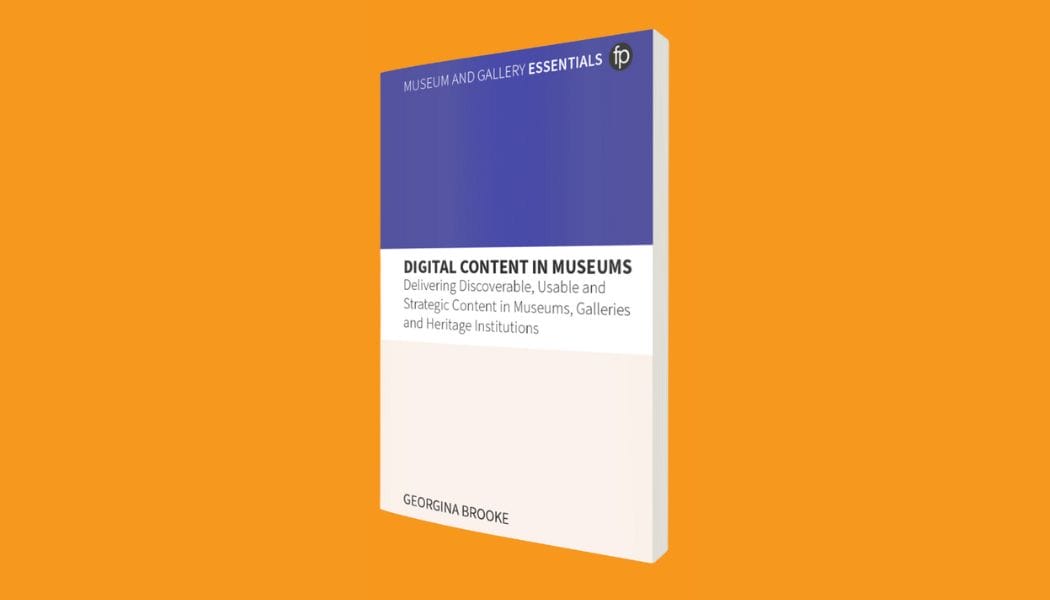
How can museums move beyond just digitising collections to actually telling compelling stories online?
Absolutely, the book ends with the example of the Tank Museum.
The Tank Museum has an online collection, but it also knows that the numbers that will serendipitously land on pages of their digitised collection is limited, and will overindex on audiences that have already heard of the Museum – these pages aren’t necessarily very significant opportunities for growing new audiences.
Instead they’ve used YouTube as a way of being discovered by global audiences united by their love of tanks. Platforms like YouTube and TikTok are very good at suggesting content you might be interested in. This allows Tank Museum stories to be seen and enthused about with a much larger number of international tank fans than would happen upon it on Museum’s website. It allows them to tell more dynamic stories and to use audience comments and YouTube membership to cultivate enthusiasm and conversation amongst their audience.
In a globally connected world where our institutions hold international collections, and a lot of our closest relationships are mediated online, this feels like the direction more museums should be taking – using digital to create a way of sharing collections meaningfully that doesn’t involve stepping through the physical doors.
How should museums handle the tension between scholarly accuracy and engaging, accessible digital content?
I think we need to be able to do both, but be deliberate about where.
The nice thing about web content is progressive disclosure; you can write both a high level summary and link to more detail for those that are interested. That’s not something you can do with a static/print medium in the same way.
I also think the ‘tension’ between scholarship and accessibility comes about because the workflow and governance between curatorial experts and public engagement/digital teams isn’t working as well as it should.
One of the key things the Government Digital Service (GDS) introduced in their rollout of ‘content design’ as a professional discipline was the idea that subject matter experts (or ‘scholars’ in a museum context) should be responsible for fact checking, not sign off. So if a page is designed for a general public audience, it needs to be factually correct, but we don’t need curators/scholars giving stylistic dictats on how best to write for the web. That should be the domain of the content designer / digital team.
With AI tools becoming more prevalent, how do you see them fitting into museum digital content creation while maintaining authenticity and trust?
It’s an interesting one.
I see a mix of approaches when it comes to AI. At the Museum Next AI summit earlier this year there were very few talks from UK museums, the London Museum and a PhD student working from London Southbank University and the Tate were the only two. There was far more coming out of Museum Mile in New York and the Gulf – places, I suspect, with a heftier R&D budget for such things than most UK museums enjoy at the moment.
At the same time, while the conference circuit and sector publications like to talk about AI, there’s very few examples of a published AI policy. We’re just rerunning the cultural content survey, asking sector professionals how they’re using AI and what we find is that the appetite isn’t huge, I think there’s still a lot of mistrust around it.
I think it makes sense to be abreast of AI tools and to know how to use them responsibly (not uploading sensitive information to free LLMs – for example). There are some great examples within the sector of using it to crunch large datasets. Rob Stein at National Gallery of Art (DC) talked about building a custom AI to help them analyse tens of thousands of visitor feedback datapoints, a task that they simply don’t have resources to tackle manually.
In institutions where there is a central R&D team, it could be a useful ally. But he reality for most UK museums is that that team doesn’t exist and that we don’t yet have a workable model for how best to adopt it responsibly and sustainably and for the good of our audiences.
What’s one change you’d most like to see across the sector in how museums approach digital content?
I’d like to see digital content recognised as a professional discipline and the key areas; discoverability, usability and strategy – to be properly accredited.
___
‘Digital Content in Museums: Delivering Discoverable, Usable and Strategic Content in Museums, Galleries and Heritage Institutions‘ by Georgina Brooke is out now via Facet Publishing.

